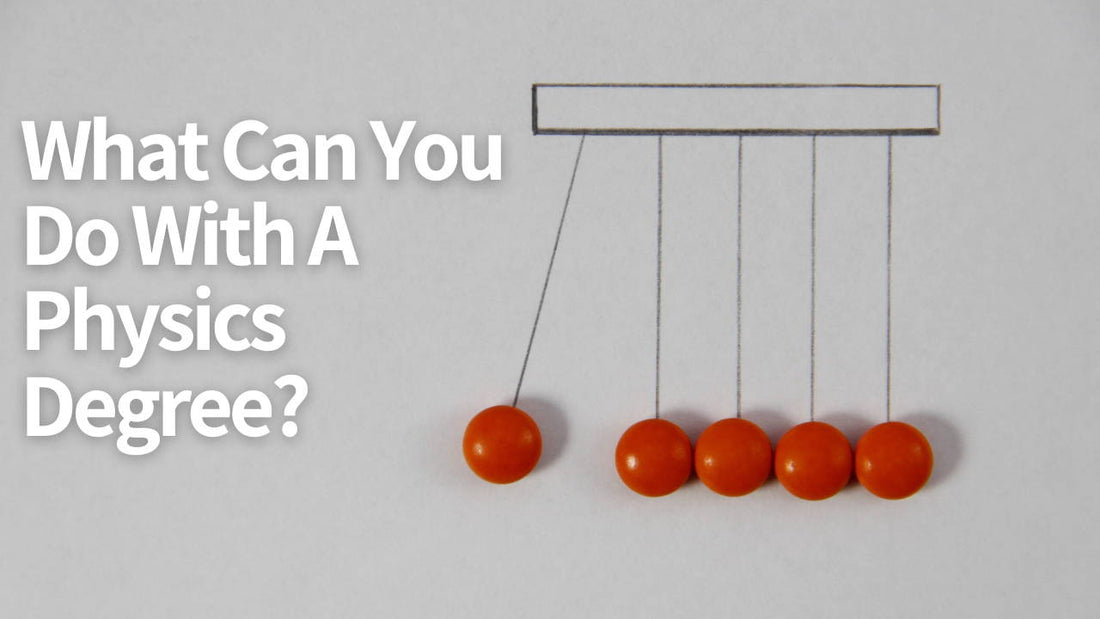What Can You Do With A Physics Degree?
Step into a high school science classroom and you will likely see many differences, yet in every classroom there is a common thread – a passionate teacher motivating their students to be intrigued with the wonders of science. Seeing a student’s enthusiasm for your subject grow into ambition to pursue a degree in that subject is a proud moment for any teacher. However, for physics teachers, inspiring students to view physics as a potential career path can be a unique challenge.
As high school students begin making post-graduation plans, the decision to declare an intended major can often be daunting. It can be scary to choose a field of study that meets one’s future goals, which of course vary from student to student. Some students carry familial expectations of success and may focus on a steady career that can help provide for their loved ones while others may want to pursue cutting edge technology, hoping to innovate the next “big thing.” A student’s post-graduation future plans depend on what they want for their future, and how they think they can get there.
Visibility Of Physics As A Career
Marian Wright Edelman is credited with saying “You can’t be what you can’t see.” One of the reasons some college majors and careers are more popular than others is because students know that they exist. Even if our students want to study science, they may not know what a scientist actually does, besides researching or teaching. Compared to other sciences, Physics is perhaps the least well known and most misunderstood. Often known only for iconic scientists like Einstein or Feynman, physics gets lost between math and chemistry, sometimes just labeled as the science where “things go boom.”
STEP UP's Career In Physics Lesson
To help students learn about the different careers related to physics, and how physics relates to their everyday lives, the STEP UP program developed the Careers in Physics lesson. The lesson starts by asking students to list all the jobs they could have after earning a physics degree. Unsurprisingly, some come up frequently: teacher, researcher, professor, physicist and astronaut. The occasional funny response like “evil scientist” keeps the discussions interesting. After compiling everyone’s ideas, students use a free online tool and are matched with profiles of people who earned a physics degree. Students are matched with profiles based on their answers to two multiple choice questions about which areas of study they are interested in and which factors about their future jobs are most important to them. Students are always fascinated to learn more about how a degree in physics led to becoming an intellectual property lawyer or a medical career involving radiation therapy.
Students often go back and forth between the questions and profiles to change their choices and learn about even more careers. After sharing in groups, students are asked to add any new careers to the existing class list, which becomes much longer and more diverse than before. After the teacher shares a presentation with some additional statistics about careers in physics, students have the opportunity to picture themselves in their future careers after earning a physics degree.
Envisioning a Future in Physics
Using a profile template, students apply what they learned about studying physics, and their own personal values and aspirations, to write a narrative about what their future lives will be like. These profiles are great for getting to know your students better and learning about their personal goals. Displaying the profiles around your classroom allows students to view each others’ profiles and leads to further discussions about their interests and future career goals. If the profiles are up for Back To School Night or Open House, the families of your students can see how learning more about physics can help their students reach their goals.
More About STEP UP Physics
The Careers in Physics lesson is typically the first piece of the STEP UP curriculum teachers use in their classrooms. Later in the year, when a classroom community has been established, teachers further the discussion with the Women in Physics lesson. In that lesson, students practice their data analysis and scientific discourse skills while learning more about who has traditionally studied physics both in the United States and around the world. Learn more about both lessons on our website, www.STEPUPphysics.org/curriculum. You can also join the STEP UP online community, made up of educators and allies from every level, to learn more about how to teach the lessons and adapt them for your classrooms.
This work is supported by the National Science Foundation under Grant Nos. 2300607,1720810, 1720869, 1720917, and 1721021 and the Gordon & Betty Moore Foundation DOI: doi.org/10.37807/GBMF11451
About the author
Bree Barnett Dreyfuss has been teaching Physics and AP Physics at Amador Valley High School for almost 20 years. She has been involved with the STEP UP program since 2018, helping to increase the number of undergraduate women in physics and supporting inclusivity in high school physics classrooms.
Looking for more CoolStuff?
Check out the Education Center for past CoolStuff articles that provide free resources, how-to videos, and teacher-written articles like this one.


